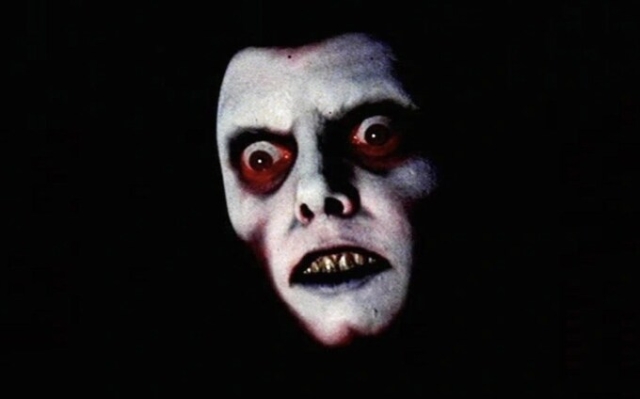 The Demon Pazuzu as seen (briefly) in The Exorcist
The Demon Pazuzu as seen (briefly) in The Exorcist
This is perhaps the greatest horror film ever created. In the 50 years since its release, The Exorcist has horrified audiences, spawned an extended franchise (including a terrible new version) and become part of the pop culture lexicon. It also has some of the strangest behind-the-scenes stories in Hollywood history, and there are many myths surrounding the making of the film and the aftermath of its release. This is where we separate fact from fiction.
Myth 1: The story is based on a true story
The Exorcist is adapted from the novel of the same name by William Peter Blatty, which in turn was inspired by a 1949 case involving a 13-year-old boy. The film's director, William Friedkin, said Blatty originally intended to write a non-fiction account of the case, but was asked to fictionalize it (including changing the gender of the main character) to protect the boy's identity.
The boy, whose identity was revealed after his death in 2020 as Ronald Edwin Hunkeler, was an only child in Maryland and spent much of his free time with Aunt Tilly, who introduced him to the Ouija board. After Tilly's death, the family apparently began experiencing strange phenomena in Ronald's presence: unexplained noises, flying household objects, and furniture moving spontaneously.
“The family was Lutheran,” Friedkin said, “and they went through all the steps that you see in the film: going to doctors, to clinics and, finally, to the priest.” The Hunkelers went to Alexian Brothers Hospital in St. Louis, where three Jesuit priests agreed to perform the exorcism. It turned out to be a traumatic experience: during the Litany of the Saints, the bed began to shake, words such as «evil» and «hell» appeared on Ronald's body, he partially broke free of his bonds and attacked the priests with a spring. /p> 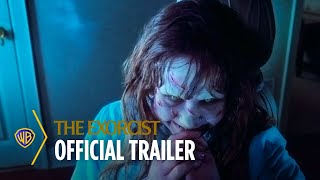
However, not everyone was convinced. Ronald was clearly a troubled child who had poor school performance and was known for throwing tantrums to get attention or to bully other children. He could easily leave marks on his body, make the bed shake, and so on. Writer Mark Opsasnik called him «a highly intelligent trickster who pulled pranks to scare his mother and fool the neighborhood children.» Another writer, Thomas Allen, said that Ronald «was just a deeply troubled boy, there was nothing special about him.»
Ronald worked almost his entire adult life as a NASA engineer. A friend said he lived in fear that his past would come out and jeopardize his career. “We always went out of the house on Halloween because he figured someone would come to his house and find out where he lived and never give him peace. He had a terrible life of worry, worry, worry.»
Verdict: True, with the caveat that Hunkeler may not be the most reliable source.
Myth 2: The film was «cursed»< p>The combination of plot and troubled production led to the widespread belief that the film was cursed. «There is an evil force in the film, in the very fabric of the film,» said televangelist Billy Graham, and the address of Friedkin's New York office — 666 Fifth Avenue — also played a role in the idea of demonic possession.
A series of accidents and incidents helped extend principal photography from a planned 85 days to more than 200, meaning the film went $2.5 million over budget ($12.5 million today). Six weeks of this delay was due to a fire caused by a bird flying into a circuit breaker: the fire destroyed all the interior of the house except one, Regan's room, where most of the film's loudest scenes take place.
There have been several deaths associated with the film. Two actors, Jack McGowran and Vasiliki Maliaros, died during filming, as did the night watchman; room refrigeration operator Regan; camera assistant's newborn baby; Max von Sydow's brother (who forced him to return to Sweden after the first day of filming); and grandfather of Linda Blair. Ellen Burstyn and Blair were injured on set.
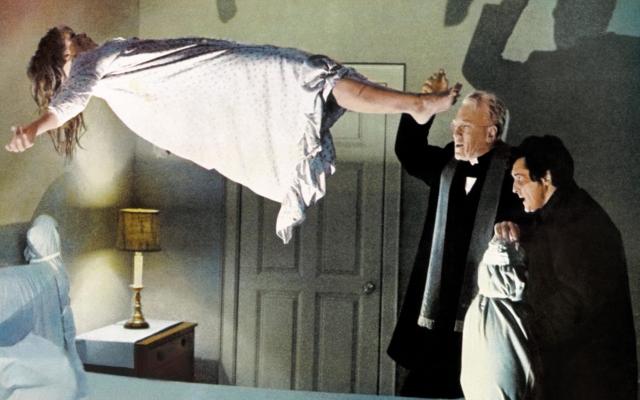 Scene from the film “The Exorcist” Author: Alami
Scene from the film “The Exorcist” Author: Alami
Burstyn broke her tailbone and was on crutches for the rest of filming after a technician pulled her too hard during a scene where a possessed Blair Regan throws her mother Chris across the room. Blair broke her lower spine from being tied too loosely to a rocking bed and later developed scoliosis. (Actual footage of both incidents is shown in the final version.) «The back injury was much more serious than I could have imagined and really impacted my health for a long time,» Blair said. In addition, Jason Miller's son was hit by a motorcycle, his thumb was cut off by a carpenter, and a lighting technician lost a toe.
“I'm not into the occult,” Friedkin said, “but after everything I saw in this movie, I definitely believe in demonic possession. From the very beginning we have been haunted by strange and sinister things.» Marcel Vercouter, whose special effects innovations include a dizzying life-size mannequin of Blair, said: «I felt like I was playing with something that shouldn't be played with.» Things got to the point where the film's technical consultant, Father Thomas Bermingham, had to give his blessing to the cast and crew (Friedkin had originally asked him to perform his own exorcism, but Bermingham felt it would add to the overall anxiety rather than alleviate it). /p>
However, again, there are rational explanations for these incidents, and film historian Sarah Crowther believes that Warner Brothers inflated the «curse» stories to help the film sell. A long and intense production will always have its casualties, especially in an era when health and safety precautions were much less stringent than they are now, and the deaths of two actors in particular were unlikely to be suspicious: McGowran was the victim of a flu epidemic, and Maliaros was 90 years old. “If you shoot something for a year,” Blatty said, “people will get hurt, people will die. There is no exorcist's curse.»
Verdict: False, but certainly a lot of coincidence.
Myth 3: Spectators fainted.
“On December 26,” wrote Newsweek in 1973, “a movie called The Exorcist was released in theaters across the country, and from then on all hell broke loose.”
In fact, a strong public reaction preceded the official opening: at the film's only preview, some audience members screamed and ran out of the theater. As soon as the film was released, there were reports of mass fainting, a woman miscarrying in New York, and vomit clogging bathroom sinks to the point that a Toronto movie theater manager said, “We practically have a plumber living here now.” Some cinemas organized ambulance calls. Kansas City police were reportedly on hand with tear gas in case of unrest as a crowd in Chicago reportedly used a battering ram to break into a movie theater. Critic Roy Meacham said he saw children leave performances “devastated and exhausted; they had a look that I had never seen before.”
Time magazine spoke with one movie theater manager who averaged «four blackouts and six episodes of vomiting» per screening; “My windshield wipers are going crazy cleaning up the vomit,” said another.
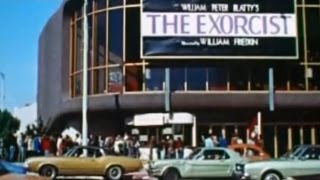
The scene that evoked perhaps the most visceral reaction was Regan's cerebral angiography, during which blood gushed after a needle was inserted into her neck. In addition to addressing the widespread fear of needles, the scene was so accurate that Friedkin claimed it was used in medical educational films.
Verdict: Fainting may have been the least of the consequences; one reliable report confirmed that after watching it, «you couldn't even go near the sink.»
Myth 4: The film was banned in various places, including the UK
The Exorcist originally opened with an R rating in America, allowing children under 17 to watch if accompanied by an adult. Some city officials have tried to change that. Washington threatened to arrest theater staff if any minors were allowed in; Boston and Hattiesburg, Mississippi, tried to ban the film entirely, with limited success.
 Spectators queue to watch The Exorcist, 1974. Photo: Bettmann
Spectators queue to watch The Exorcist, 1974. Photo: Bettmann
The film was released in the UK in 1974, although some councils refused to allow it to be shown in their regions. Ten years later, the British Board of Film Classification (BBFC) refused to even give it an 18 home video certificate on the grounds that underage viewers, aware of the film's notoriety, would still seek it out. Certification was not issued until 1999, when the BBFC felt that the new generation of teenagers, accustomed to more complex and varied media than their predecessors 25 years earlier, were not at risk of serious concern.
Verdict: Partially true, but unlikely to make a dent in the box office.
Myth 5: The Catholic Church opposed its release.
At first glance, The Exorcist was unlikely to be a film that would be in great demand at the church. list. Friedkin himself said that “the cardinal in Boston hated it and wanted to ban it.”
However, not all clergy adhered to this point of view. “Most people at the highest levels of the church have fully accepted it,” Friedkin added, “because the Roman ritual of exorcism is still in the New Testament.” A Cardinal in New York preached about it from the pulpit and said many good things about it.”
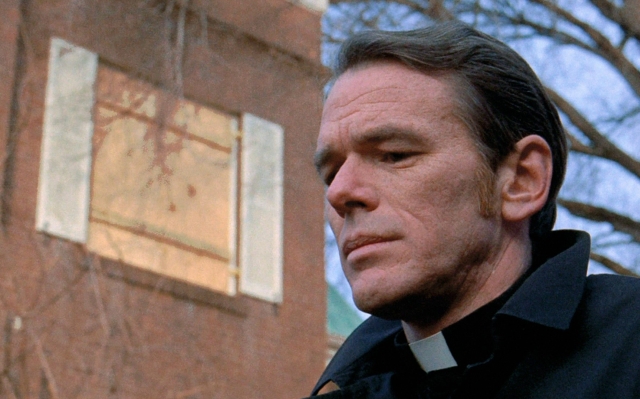 William O'Malley Father Dyer Photo: Alamy
William O'Malley Father Dyer Photo: Alamy
For many priests, The Exorcist was essentially a film about the power of faith. The heroes are priests, which even then was not the case in many films related to the church. They succeed where science and medicine could not cure an innocent girl. Father Dyer was played by real-life priest William O'Malley, and before filming began, Friedkin received help from other priests who shared with him original written accounts of the Hunkeler case. The director also stated that the number of requests for the fabric increased after the film's release.
Verdict: patently false
Myth 6: The film uses subliminal imagery
“I had seen subliminal cuts in a lot of films before I put them into The Exorcist,” Friedkin said, “and I thought it was a very effective way of storytelling. The subliminal editing [here] was done for dramatic effect — to create, achieve and maintain a kind of dreamlike state.»
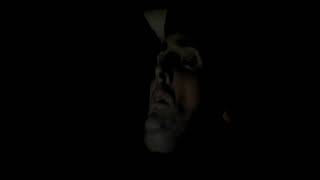 < p>The most famous subliminal image is the 1/8 second flash of a demon's face in Karras's father's dream about his dead mother. Some viewers also believe that a skull can be seen in one of Merrin's father's breath clouds, and that the protective padding on Regan's bedposts was designed to cast phallic shadows on the wall. There are also auditory triggers, such as the sounds of bees (especially in the first scene in the desert), which trigger an innate fear response in most people.
< p>The most famous subliminal image is the 1/8 second flash of a demon's face in Karras's father's dream about his dead mother. Some viewers also believe that a skull can be seen in one of Merrin's father's breath clouds, and that the protective padding on Regan's bedposts was designed to cast phallic shadows on the wall. There are also auditory triggers, such as the sounds of bees (especially in the first scene in the desert), which trigger an innate fear response in most people.
Verdict: Thanks to the invention of the pause button, we know this is true
Myth 7: The demon comes from ancient mythology
In the film, Regan is essentially possessed simply by the devil, but the statue that Father Merrin discovers in Iraq at the beginning of the film is that of Pazuzu, an ancient Assyro-Babylonian demon. Pazuzu had the power to control the winds and therefore cause destruction and famine: but he was also believed to protect pregnant women from harm from his rival goddess Lamashtu. Pazuzu's role was more prominent in Blatty's original novel (and will be again in John Boorman's sequel Exorcist 2: The Heretic).
Verdict: true
Myth 8: At least two serial killers are involved in the film
The radiographer's assistant was played by real-life radiologist Paul Bateson, who was arrested in 1979 for the murder of film critic Addison Verrill. While awaiting trial, he claimed he was also responsible for the so-called bag murders of 1977-78, in which gay men were dismembered and their remains were wrapped in plastic bags (a case that inspired Friedkin's 1980 film «Cruise» with Al Pacino). However, a lack of evidence meant that Bateson was only sentenced for Verrill's murder. He was released from prison in 2004.
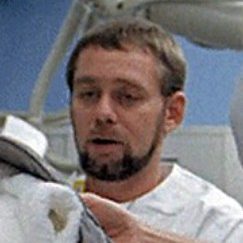 Murderer Paul Bateson in the film «The Exorcist»
Murderer Paul Bateson in the film «The Exorcist»
Another connection involves a still unsolved question. The Zodiac killer who wrote more than 20 letters to the police over more than ten years. One of them described The Exorcist as «the best saterical comedy» [sic] I've ever seen.
Verdict: True, but a little dubious
Myth 9: Lightning struck the church during one of the film premieres
The premiere in Rome took place during a thunderstorm. A 16th-century church across the road from the cinema was struck by lightning so powerful that the cross at the top of the spire broke off and fell to the square below.
Verdict: True, but unlikely evidence of demonic intervention
Myth 10: This caused one actor to fall off the wagon
Mercedes McCambridge was one of Hollywood's top voice actresses, and Friedkin wanted her to voice Regan during the possession scenes. “I’m a practicing Catholic,” McCambridge told him, “and I’m also a drunk. I went through AA, I had a lot of deep psychological problems, and the church was a rock for me. I know what you want me to do for this vote, and if I do it, I'll have to start drinking again.»
Not only did McCambridge start drinking again, she also smoked heavily and swallowed raw eggs to make her voice as menacing as possible. She asked to be tied to a chair because Regan was also tied in those scenes, and she asked that two priests she knew be nearby. “She looked up from the take and then walked over to the couch behind where these priests were,” Friedkin said, “and fell into their arms and burst into tears.”
Her son John Markle, a futures trader, discovered it all there was a secret account in her name to which he directed trading profits. When he was fired, McCambridge refused to help him devise a scheme to pay off the company's debts. Markle killed his wife Christina and daughters Amy and Suzanne before committing suicide and left McCambride a bitter letter. “You called me a liar, a cheater, a criminal, a bum,” he wrote. “You said I ruined your life. You were never there when I needed you, so now me and my whole family are dead. You can get money. Good night, mom.”
Verdict: unfortunately, true
















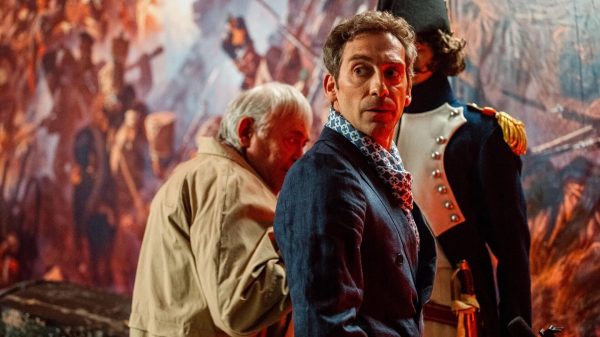


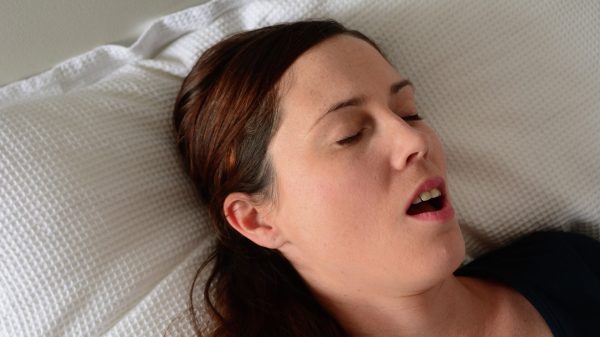






































Свежие комментарии